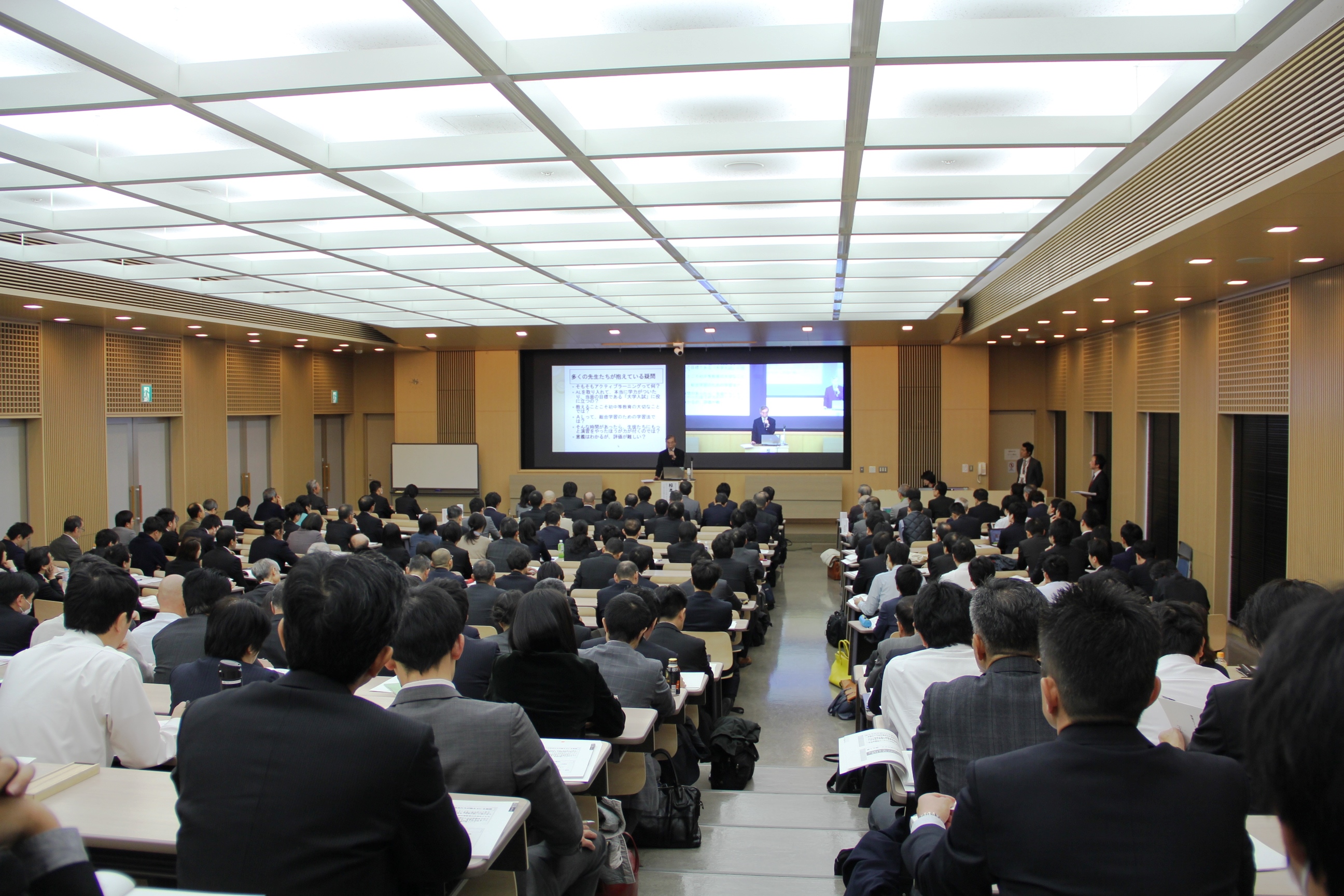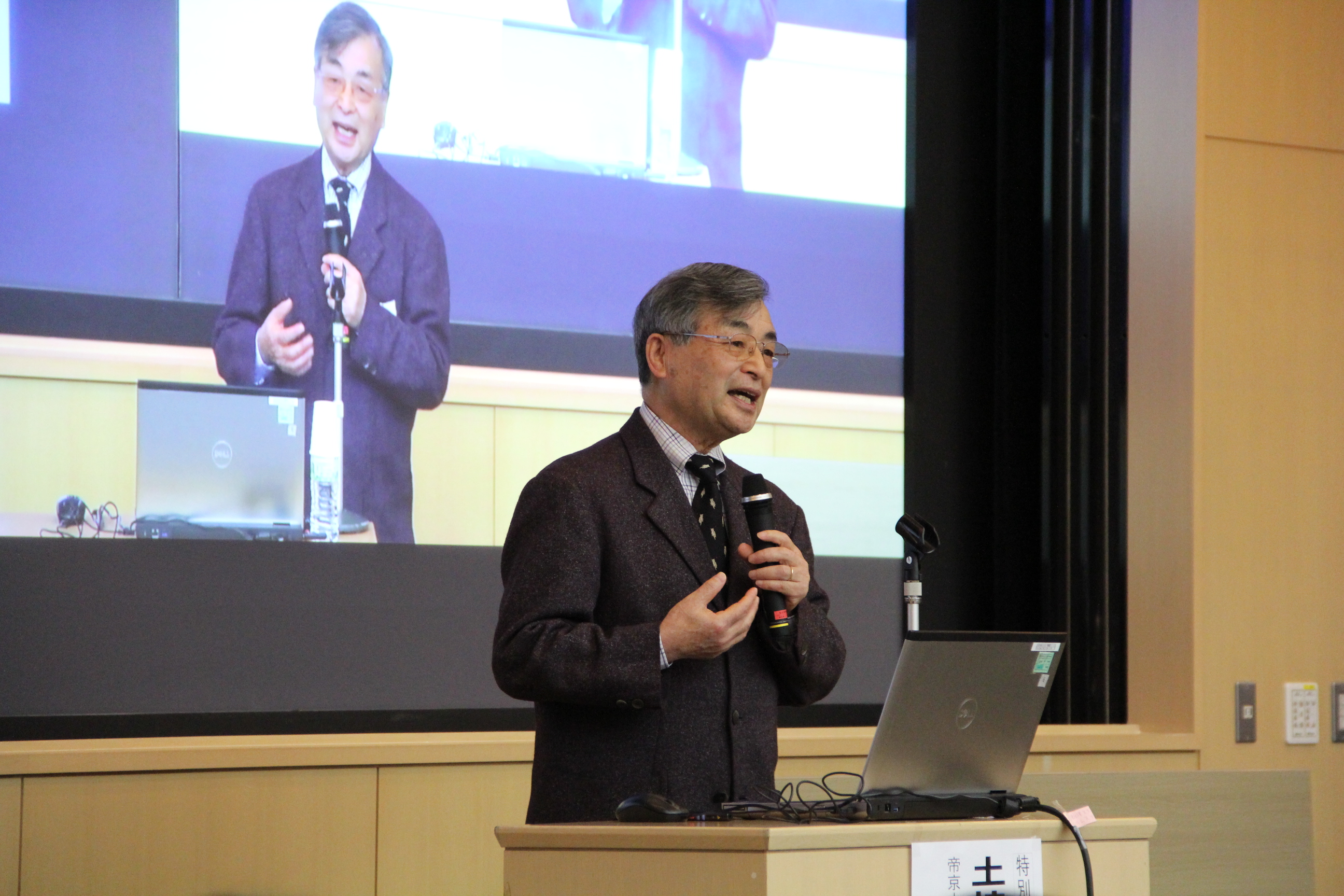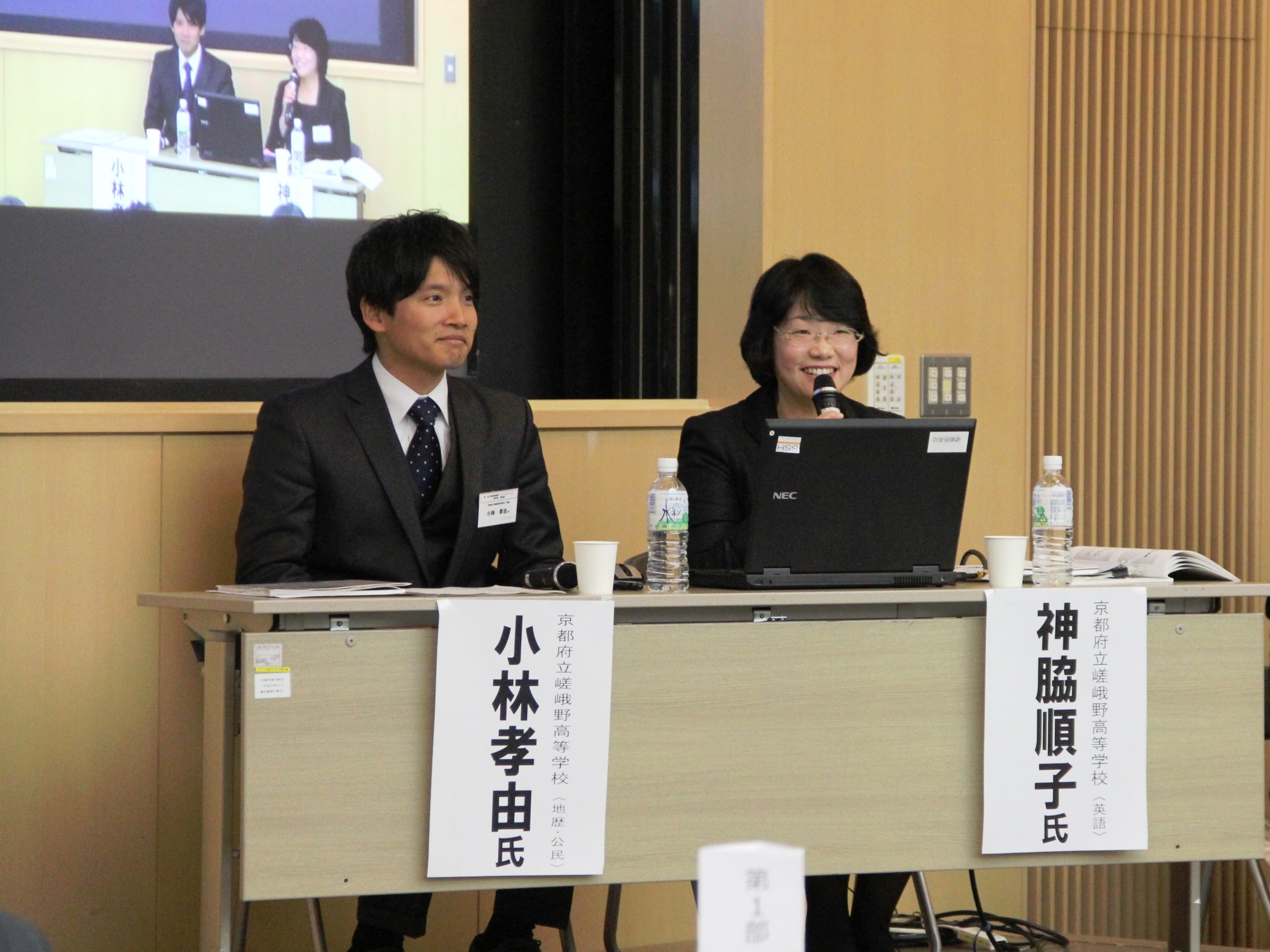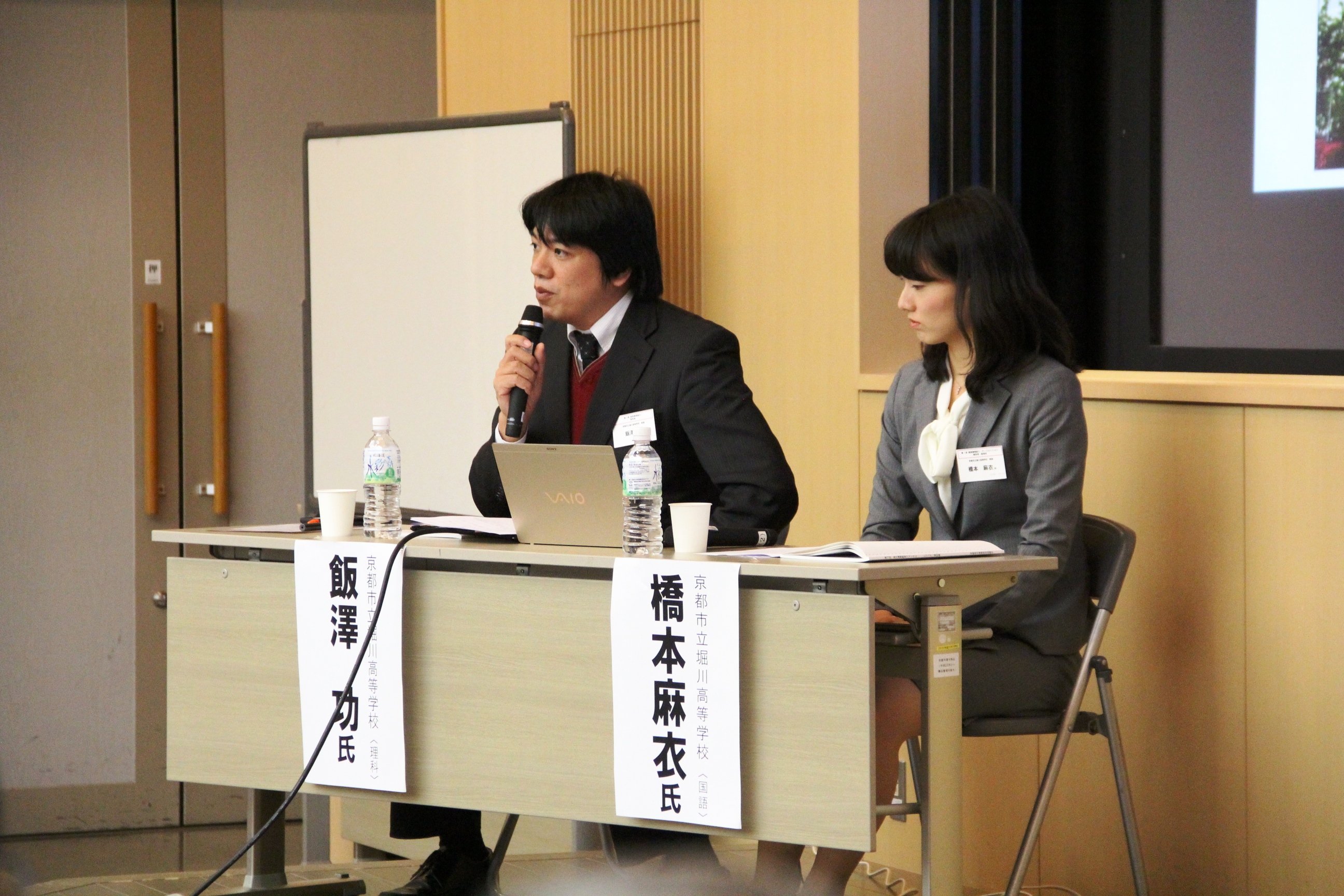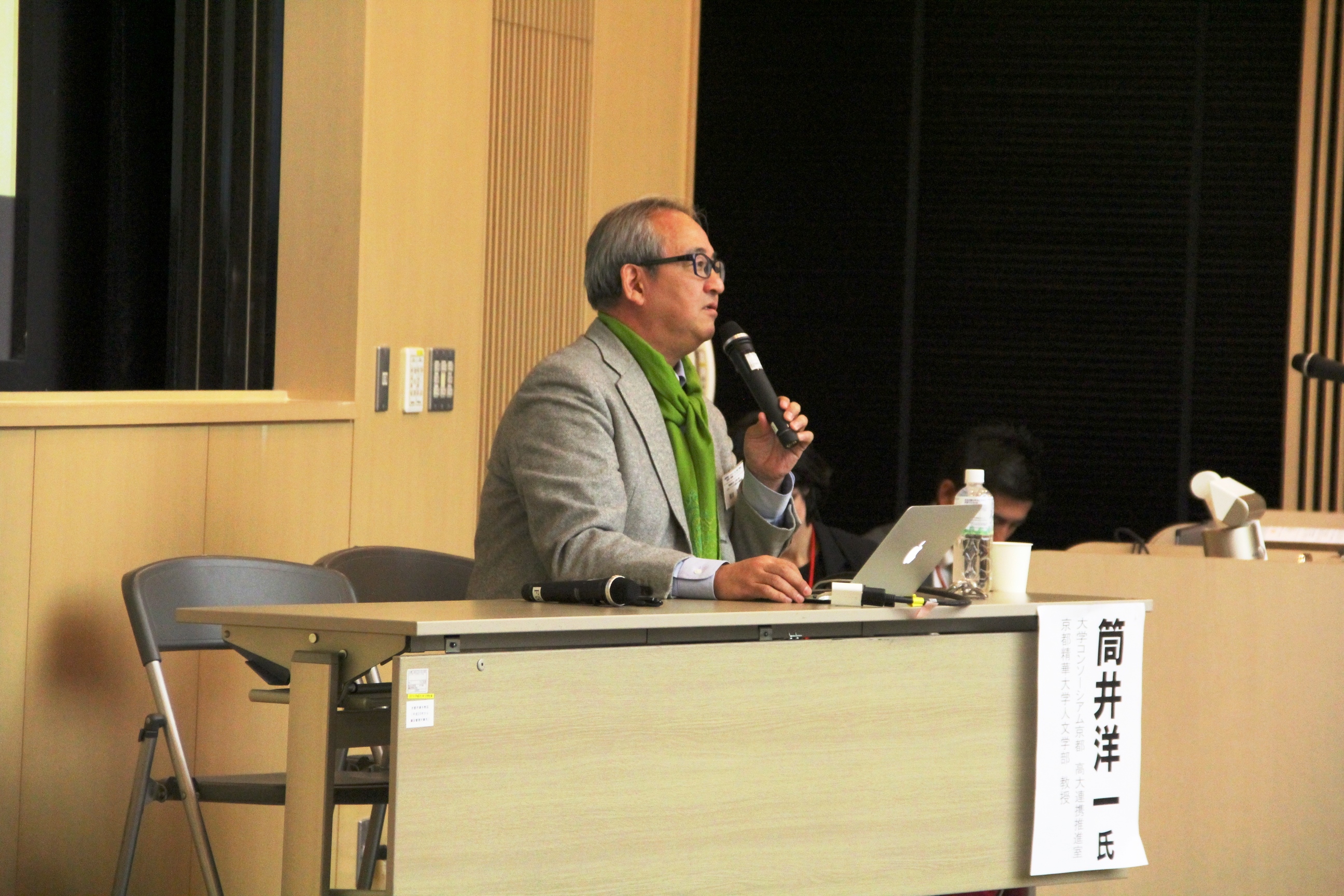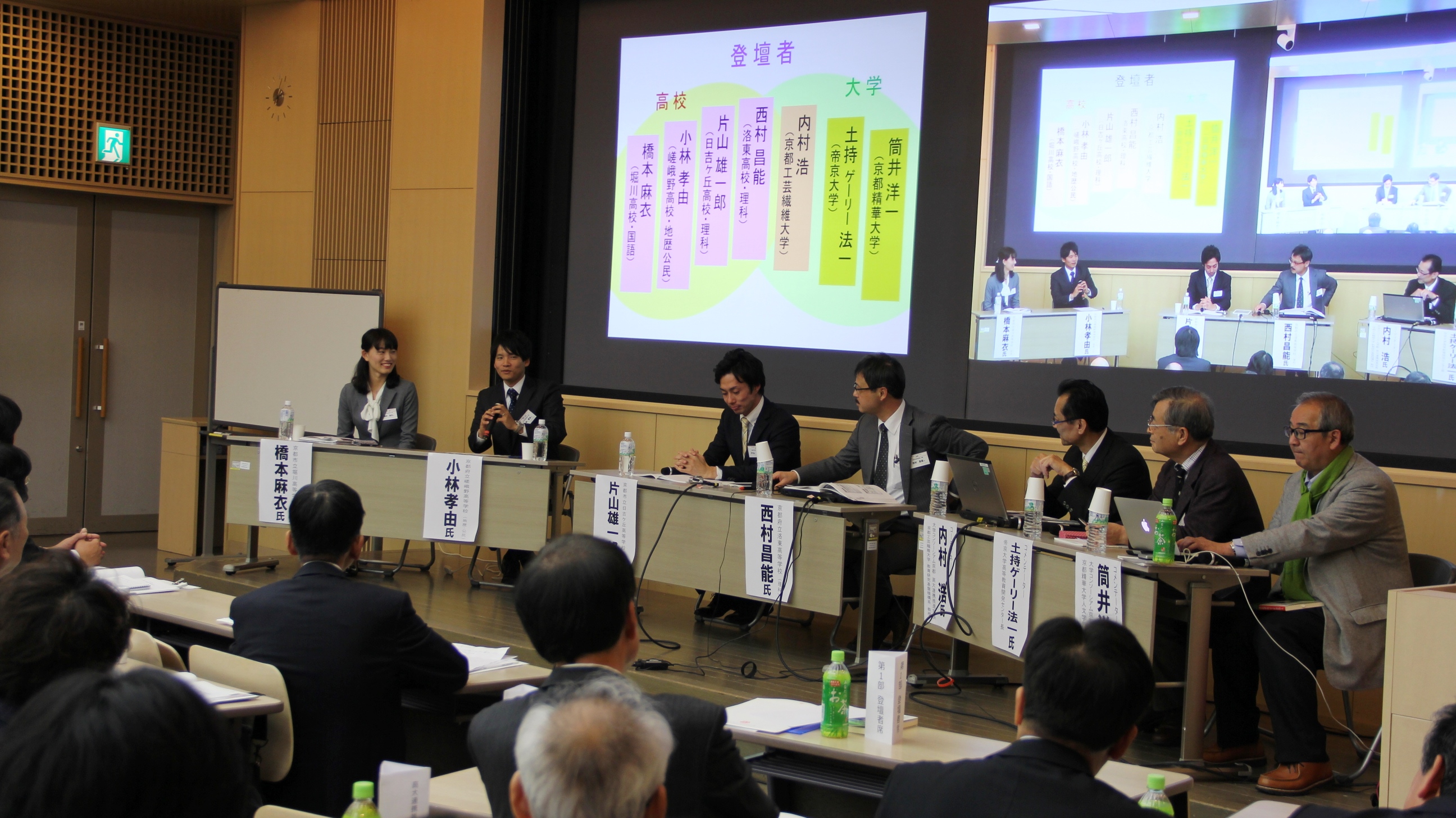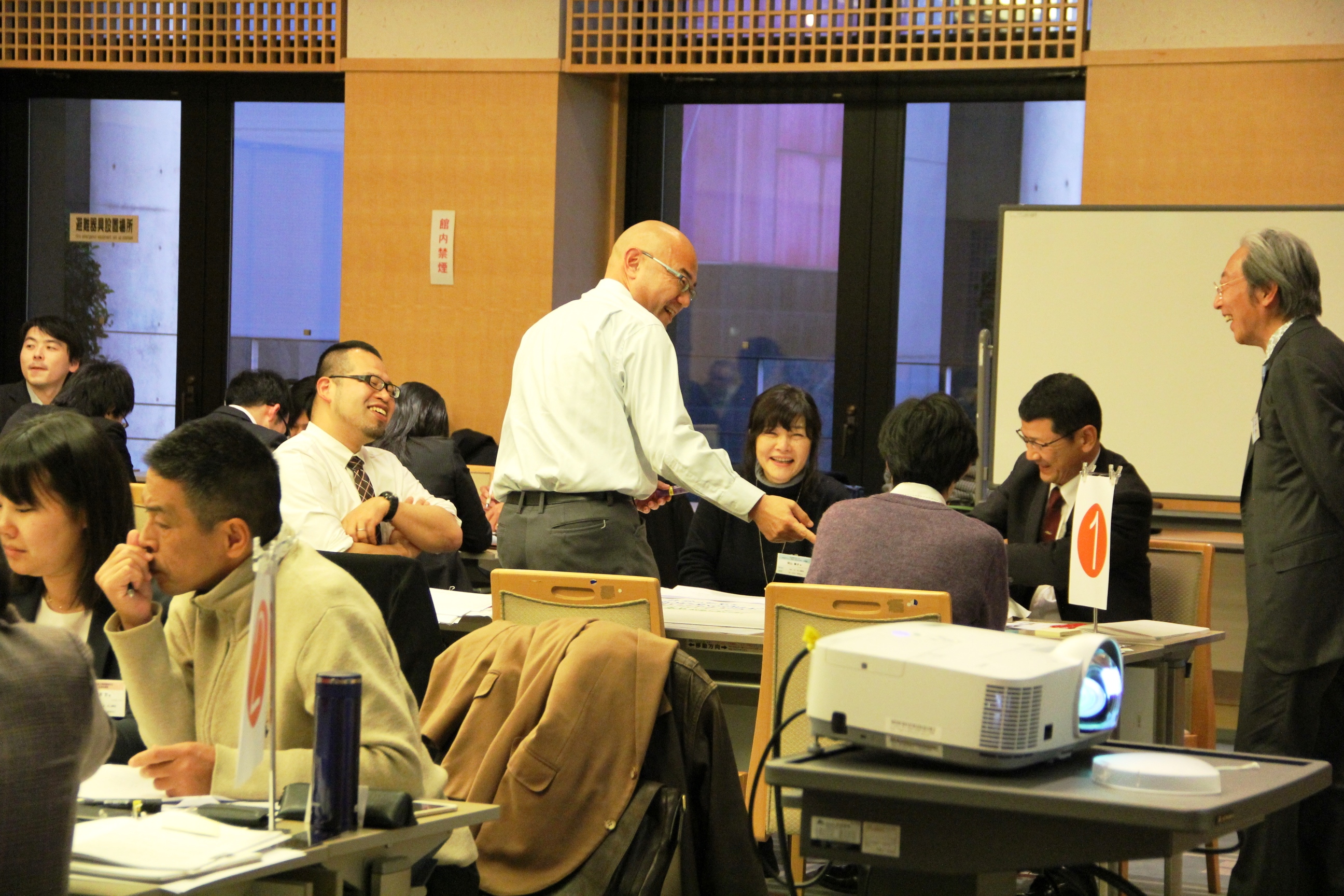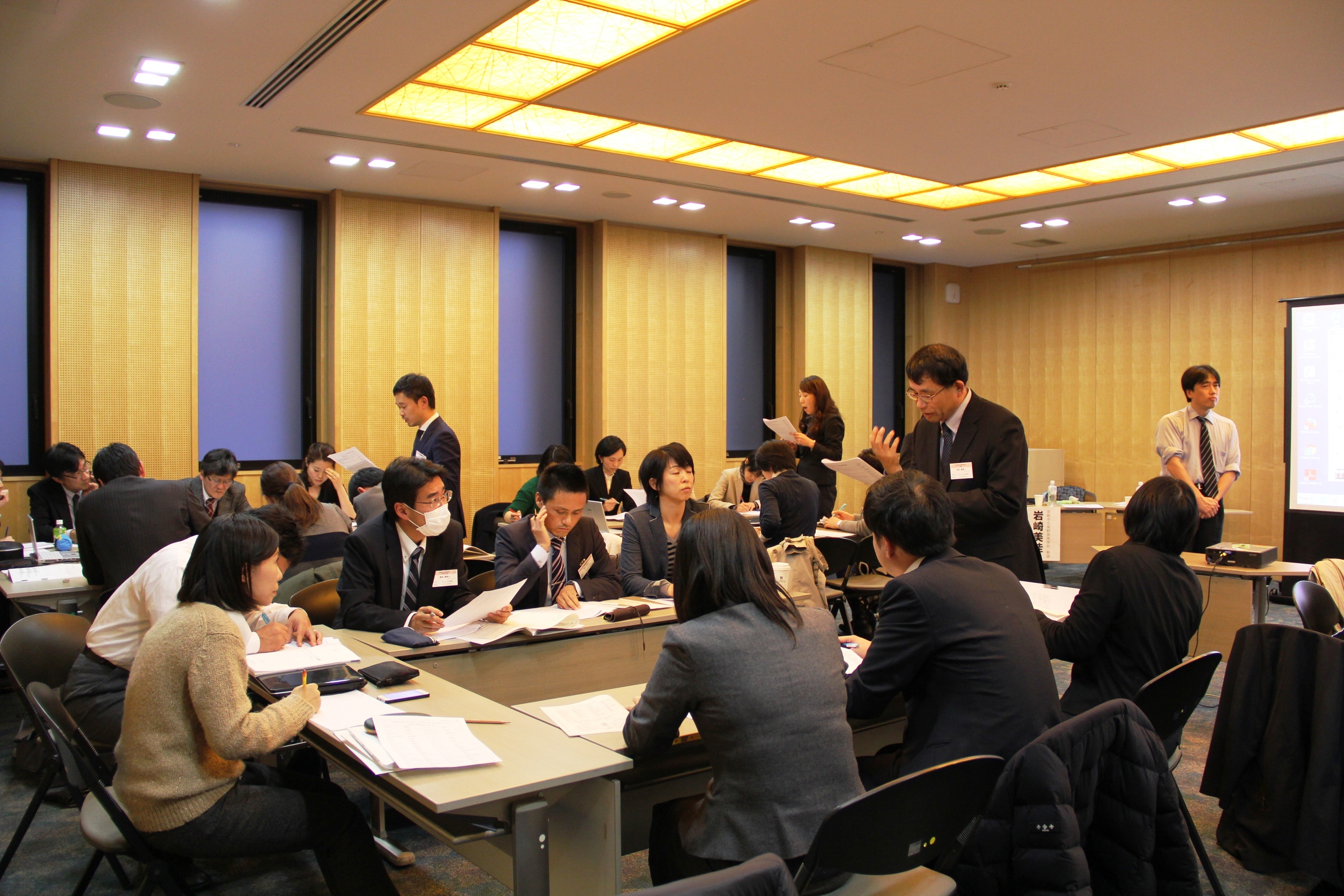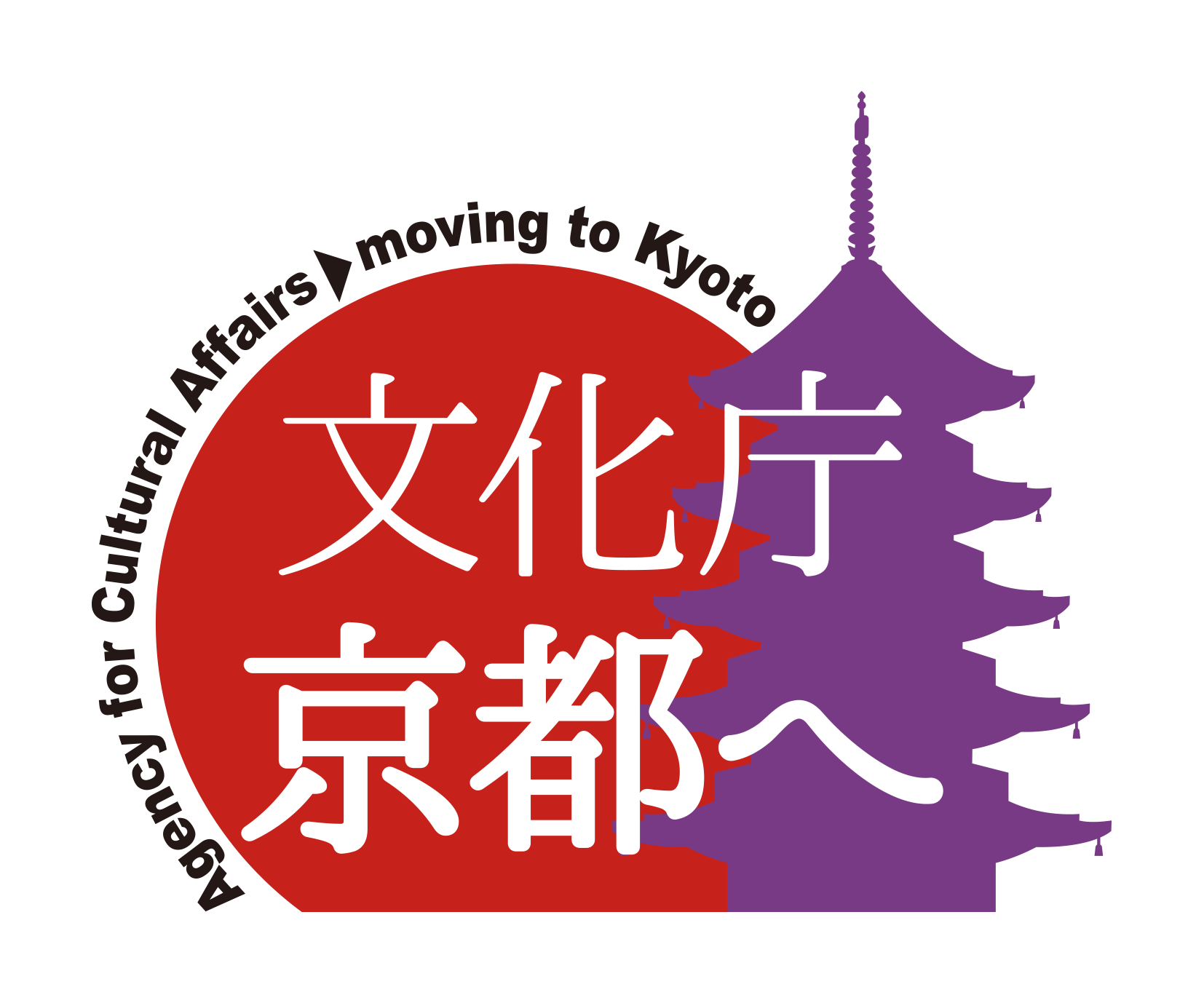Business overview
The forum is being held with the aim of “sharing information on domestic trends and disseminating information on efforts being made in Kyoto” regarding issues of collaboration and connectivity in education between high schools and universities.
Event Outline
The 13th High School-University Collaboration Education Forum
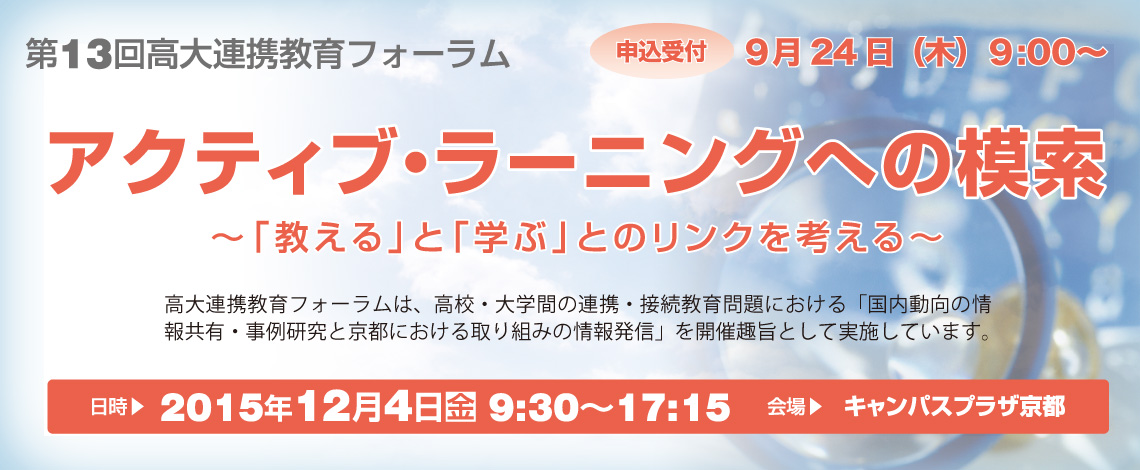
| schedule | Friday, December 4, 2015 9:30-17:15 | |
| venue | Campus Plaza Kyoto | |
| theme | Exploring Active Learning: Considering the Link Between “Teaching” and “Learning” | |
| Sponsored by | Kyoto High School-University Collaborative Research Council (Kyoto Prefectural Board of Education/Kyoto City Board of Education/Kyoto Prefectural Association of Private Junior and Senior High Schools/Kyoto Chamber of Commerce and Industry/University Consortium Kyoto, a public interest incorporated foundation) | |
| Capacity | Explanation of purpose, special lecture, practical case study, discussion | 200 people (first come first served) |
| Subcommittee 1.2.3.4 | 30 people each (first come first served) | |
| Application acceptance | September 24, 2015 (Thursday) 9:00 to October 31, 2015 (Saturday) 17:00 | |
| Participation fee | High school and university related people in Kyoto Prefecture | 1,000 yen |
| Anyone other than those mentioned above (including corporate participants within Kyoto Prefecture) | 2,000 yen | |
The 13th High School-University Collaboration Forum Leaflet ![]()
(Part 1) 9:30-14:45 Keynote speech, special lecture, and practical case studies
Chair: Ms. Iwako Yamamoto (Associate Professor, Department of Educational and Research Infrastructure, Kyoto Institute of Technology / Coordinator of the University Consortium Kyoto High School-University Collaboration Promotion Office)
| Opening remarks : 9:30-9:35 |
Satoshi Kitamura (Principal of Kyoto Gaidai Nishi High School / Chair of the Kyoto High School-University Collaboration Research Council) | |
| Introduction 9:35-9:45 |
Hiroshi Mukumoto (Lecturer, Faculty of Social Sciences, Ritsumeikan University / Advisor, University Consortium Kyoto High School-University Collaboration Promotion Office) | |
| Special lecture 9:45-10:35 |
Theme: Shifting from “Teaching” to “Learning” -Practice and Evaluation of Active Learning Using the ICE Model in High School-University Transition Education- Speaker: Mr. Gary Tsuchimochi, Director of the Center for Higher Education Development, Teikyo University |
|
| Currently, various forms of active learning (hereinafter referred to as “AL”) are being introduced in high schools and universities, but it is important to develop students’ ability to think independently. To achieve this, it is necessary to shift from the traditional “study” to “learning,” that is, to a teaching method and view of learning that focuses on what students have learned, rather than what the teacher has taught. In addition, the biggest challenge in AL is evaluation. Currently, evaluation using rubrics is attracting attention in Japan, but many people may feel that the evaluation criteria are ambiguous. What is the evaluation that improves the quality of students’ learning? I would like to consider how to practice AL and measure its effectiveness, focusing on the “ICE (Basic Knowledge, Connections in Learning, and Application of Knowledge) Model,” a new learning and evaluation method that is attracting attention in Canada. | ||
| Case Study Introduction (High School) 10:45-11:45 |
Theme: The challenges of introducing active learning that no one will tell you about – Groping around in Sagano and Horikawa – Presenters: Junko Kamiwaki (English), Takayoshi Kobayashi (History and Geography, Civics), Kyoto Prefectural Sagano High School; Isao Izawa (Science), Kyoto Municipal Horikawa High School; Mai Hashimoto (Japanese) |
|
| In promoting the introduction of active learning (hereinafter referred to as “AL”) within a school, there are many issues to be addressed, such as teacher training, sharing awareness among teachers, and raising students’ awareness of AL-type learning. Sagano High School and Horikawa High School have been promoting the construction and implementation of curricula, structures, and lesson content to express the desire to learn among students. In this report, teachers who have been involved in the construction and implementation of these at both schools, and young teachers who are planning to develop lessons that encourage active learning in students under the curriculum of both schools, will report and discuss the issues that need to be resolved in order to introduce AL. |
||
| Introduction of practical examples (University) 11:45-12:15 |
Theme: The role of teachers as “learning companions” for students Speaker: Yoichi Tsutsui (Professor, Faculty of Humanities, Kyoto Seika University / Coordinator of the University Consortium Kyoto High School-University Collaboration Promotion Office) |
|
| Active learning (hereinafter “AL”) is often perceived as something that can be implemented at some schools and universities, depending on the abilities of the students (for example, whether it is a preparatory school or not), while others cannot. However, AL is not an issue for the students, but rather it calls into question how teachers will change their teaching mindset. As an attempt to change students into “learning companions,” we will consider the case of creating lessons together with outside volunteers. | ||
| [Break] 12:15-13:15 | ||
| Discussion 13:15~14:45 |
Speakers: Kyoto Prefectural Rakuto High School, Nishikawa Masayoshi, Teacher (Science) Kyoto Municipal Hiyoshigaoka High School, Katayama Yuichiro, Teacher (Science) Kyoto Prefectural Sagano High School, Kobayashi Takayoshi, Teacher (History and Civics) Kyoto Municipal Horikawa High School, Hashimoto Mai, Lecturer (Japanese) Commentators: Tsuchimochi Gary Hoichi and Tsutsui Yoichi Coordinator: Uchimura Hiroshi (Professor, Kyoto Institute of Technology, Educational Research Infrastructure Department, Director of the University Consortium Kyoto High School-University Collaboration Promotion Office) |
|
| With the participation of other high schools that are also engaged in active learning, we will share the current state of practice in high schools and future challenges, and deepen discussions on the direction we should aim for. | ||
(Part 2) 15:15-17:15 Breakout session
| Subcommittee 1 [Expression Techniques] |
Theme: Evaluation method for active learning – Proposal of a self-evaluation system by learners – Speaker 1: Seiichi Ohki (former teacher at Kobe International University High School) Speaker 2 and coordinator: Yoichi Tsutsui (Professor at Kyoto Seika University Faculty of Humanities / Coordinator of the University Consortium Kyoto High School-University Collaboration Promotion Office) |
|
| Active learning, which encourages students to be independent, is required in universities and is becoming a keyword for high school-university collaboration. On the other hand, students cannot necessarily achieve “deep learning” by being active. In this context, the need to incorporate “assessment for learning” or “assessment as learning” for students themselves as an assessment method in active learning has been emphasized. The PISA 2015 problem-solving framework is intended to evaluate individual problem-solving skills in collaborative situations. In this workshop, after a brief explanation, participants will actually experience an assessment using PISA 2015 and think about the relevance of the assessment to their own classes while working on the task. Here, we aim to practice and exchange opinions with participants on how to use the PISA 2015 problem-solving framework as an opportunity for students to reflect on how deeply and strategically they have engaged in group work activities (formative assessment). |
||
| Subcommittee 2 [Mathematics] |
Theme: Promoting Active Learning (Proactive and Collaborative Learning) – Kyoto Mathematics Grand Prix – Presenter 1 and Coordinator: Hiroshi Mizuguchi (Director of High School Education Division, Kyoto Prefectural Board of Education) Presenter 2: Naoko Kishimoto (Teacher, Nanyo High School, Kyoto) Presenter 3: Masayuki Asaoka (Associate Professor, Graduate School of Science, Kyoto University) |
|
| The Kyoto Prefectural Board of Education has been holding the Kyoto Mathematics Contest since 2007, with the aim of cultivating talent in the science and mathematics fields and helping more students experience the fun and excitement of mathematics. Since 2009, the Board has been holding the Kyoto Mathematics Grand Prix in cooperation with Kyoto University. This time, we will report on the efforts of the second stage, the Kyoto Mathematics Olympiad Dojo. The Japan Mathematics Olympiad Preliminary is held every January, and this initiative is positioned as a study group for that purpose. Junior and high school students interested in the Mathematics Olympiad gather at Kyoto University to exchange and discuss solutions using past exam questions and other materials. The topics to be covered here are selected by staff (university faculty, high school faculty, and graduate students) in cooperation with each other, taking into account the qualities and abilities that they would like the students to acquire. In addition, the staff are working together to exchange ideas and promote the initiative so that the participating students can have a fulfilling, independent and collaborative learning experience. In this subcommittee, we would like to not only introduce this initiative, but also exchange opinions with the participants to promote independent and collaborative learning. |
||
| Subcommittee 3 [English] |
Theme: Cultivating English communication and reasoning skills through debate activities Speaker 1: Mika Iwasaki (Teacher, Kyoto Municipal Murasakino High School) Speaker 2: Tomoaki Nakagawa (Assistant Professor, Graduate School of Engineering, Osaka Prefecture University) Coordinator: Yoko Oyama (Director, School Guidance Division, Guidance Department, Kyoto City Board of Education) |
|
| Kyoto Municipal Murasakino High School has set “developing future international people” as one of its educational goals, and has focused on cultivating practical English skills, implementing English debates in classes. In this article, we will introduce the activities of students and report on how debate activities are useful for English communication and logical thinking. Even at universities, especially in science fields, it is common to have presentations and discussions in English in global settings. In this article, we will report on the rules and usefulness of impromptu English debates, as well as efforts to popularize debates, including the impromptu English debate instruction conducted by a team led by Assistant Professor Nakagawa of the Department of Mechanical Engineering, Graduate School of Engineering, Osaka Prefecture University, at Kyoto Municipal Murasakino High School. We would like to consider how to teach and evaluate English debate activities as active learning, and how to use them in classes, incorporating debate workshops. |
||
| Subcommittee 4 [Science] |
Theme: Practical training for high school students using synchrotron radiation to develop future scientists – Presentation activities that emphasize student autonomy in high school-university collaboration – Speaker 1: Hisashi Kuriki (Teacher at Ritsumeikan High School) Speaker 2: Toshiaki Ota (Director of the SR Center, Research Organization of Science and Technology, Ritsumeikan University, Professor) Coordinator: Hiroshi Tanaka (Director of the Department of Education, Ritsumeikan University) |
|
| Ritsumeikan University and its affiliated and partner schools are taking advantage of the strengths of being part of the same school and are carrying out many meaningful high school-university collaboration projects. One of the most symbolic initiatives is the annual high school student training at the SR Center, a research facility using synchrotron radiation at the Biwako-Kusatsu Campus. During this two-day training, students boldly tackle themes that go beyond the high school level through a sequence of SR explanation (introduction), SR training (experience), knowledge sharing (discussion), and presentation using PowerPoint (expression). This increases the students’ awareness of science, and also plays a role in greatly increasing their interest, enthusiasm, and motivation for future scientific research. At the same time, it is changing the attitude of high school students toward learning. With the cutting-edge research facilities at the core and the cooperation of the university, we would like to convey how high school students grow by adding initiatives that utilize the high school students’ autonomy (active learning). | ||
Implementation Report
Report of the 13th High School-University Collaboration Education Forum [Click here for details]
This time, the theme of the event was “Active Learning (AL),” which has been decided to be introduced in the next curriculum guidelines and is attracting increasing interest, especially among high school teachers. Three-quarters of the participants were from high schools, and the total number of participants was about 300 people, far exceeding the previous year.
In the “Special Lecture” in the first part, Professor Tsuchimochi of the Teikyo University Higher Education Development Center suggested that it is effective to incorporate AL in a short period of time and in a targeted manner after acquiring sufficient basic knowledge in advance, rather than introducing AL formally, and that reflection afterwards is particularly important. In addition, regarding the evaluation of AL, which many people have raised as an issue, he taught us that quantitative evaluation is difficult and qualitative evaluation is necessary, and that learning portfolios are an effective method. In addition, the ICE model and the use of ICE verbs introduced will likely be of great help in high school education in the future.
In the “Practical Case Studies (High School)” session, we had a joint presentation by Kyoto Prefectural Sagano High School and Kyoto Municipal Horikawa High School, which are leading schools in AL. On the day, rather than simply presenting their results, the students took turns giving presentations on the same theme, weaving in questions and answers for each other in between, and were creative in their presentation methods. They also introduced the trial and error they have gone through, what they have discovered during that time, and the obstacles they have overcome.
In the “Practical Examples (University)” session, Professor Tsutsui from Kyoto Seika University introduced the importance of changing the conventional view of learning, and the significance and effectiveness of lessons created together with not only teachers but also students and working adults.
In the afternoon, to further explore AL in high school settings, representatives from Osaka Prefectural Rakuto High School and Municipal Hiyoshigaoka High School took to the stage for a discussion. Many participants were seen nodding in agreement as they listened to specific examples from high schools with various academic levels.
In the second part, as in previous years, participants were divided into subcommittees for “Expression Techniques,” “Mathematics,” “English,” and “Science,” where they shared examples of AL in practice and actively exchanged opinions by subject and theme.
We plan to hold the same event next year, keeping a close eye on national educational trends, and set a theme that is in line with the times, so we hope you will participate.
Contact Information
University Consortium Kyoto Forum for High School-University Collaboration Education, Public Interest Foundation
Tel: 075-353-9153 Fax: 075-353-9101 Address:
Campus Plaza Kyoto, Nishinotoin-dori Shiokoji-sagaru, Shimogyo-ku, Kyoto 600-8216
*Reception hours: Tuesday to Saturday 9:00-17:00 (excluding New Year holidays)














